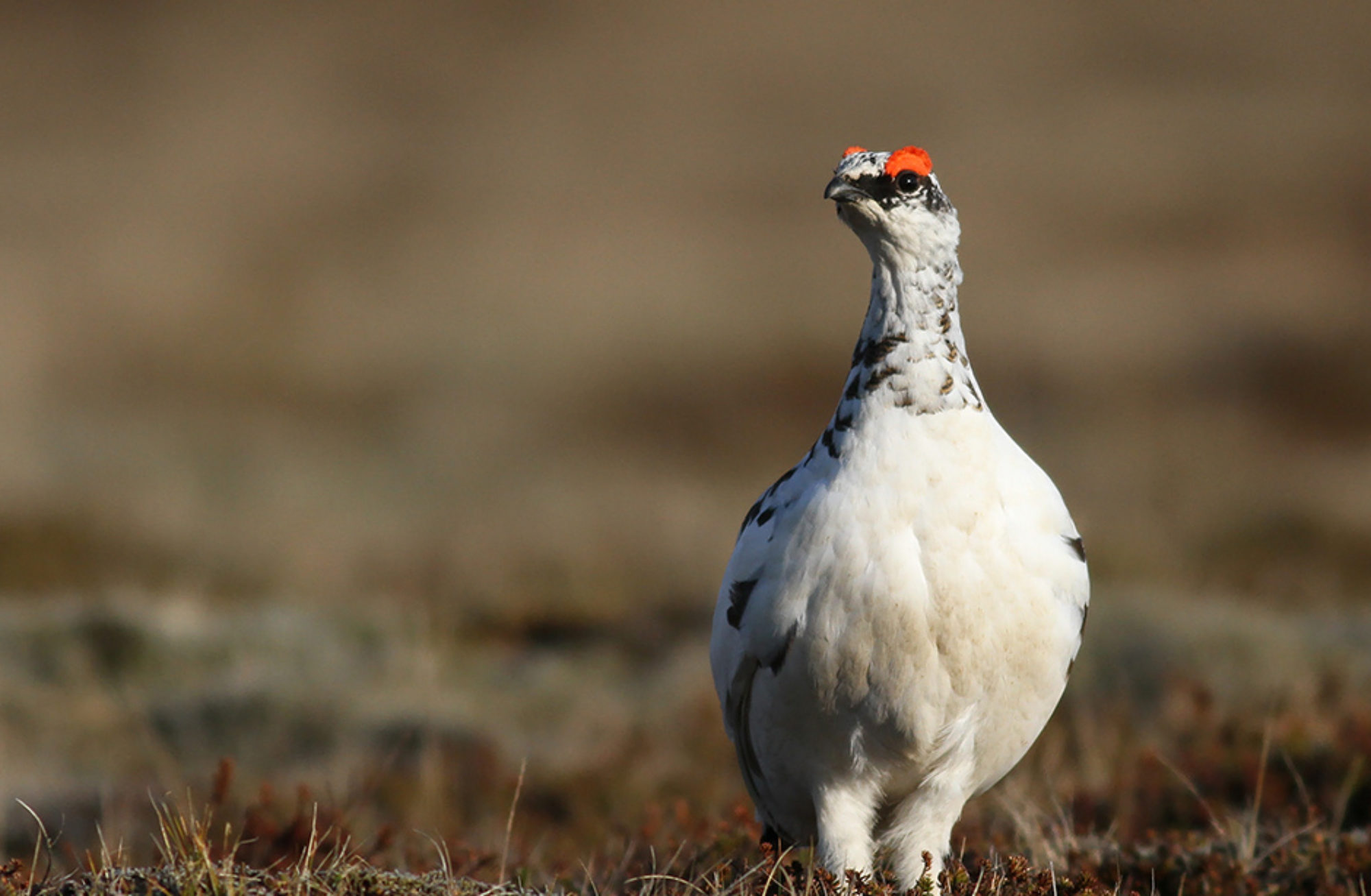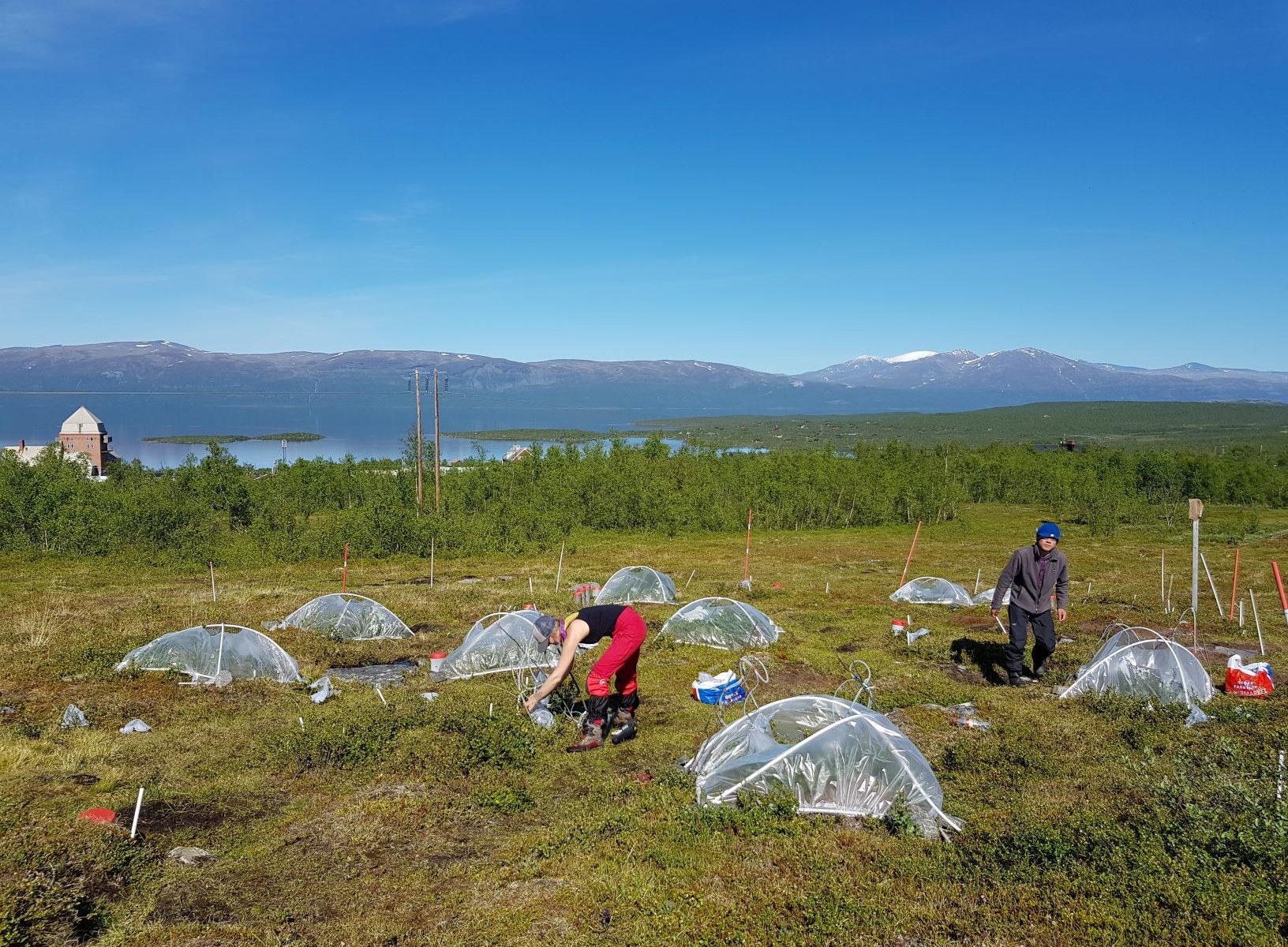Almost all plant species, particularly when stressed, release a complex blend of volatile organic compounds (VOCs) into the atmosphere. These VOCs are a fundamental defense of plants, conferring enhanced tolerance/resistance against abiotic stresses and acting as communication cues among community members. They also play important roles in atmospheric chemistry as they contribute to the formation of ozone and secondary organic aerosols.
Multitude of abiotic and biotic factors such as temperature and insect feeding are known to modulate the synthesis and release of plant VOCs. In the Arctic, however, no empirical studies have so far evaluated how climate warming and its concomitant increase in herbivory pressure interactively affect VOC emission patterns. In this study, we examined the effect of climate warming and increased insect activity on the release of plant VOCs to the atmosphere in the Arctic. We measured VOC emissions from dwarf birch Betula nana growing naturally in a subarctic wet heath, where ecosystem plots were subjected to passive warming by open-top chambers for 8 or 18 years.
The results showed that under 2°C of canopy warming obtained by open-top chambers, the plant leaf area consumed by insect herbivores increased by 300%. We exogenously applied a plant hormone methyl jasmonate to mimic plant defense responses to insect herbivory. We found that warming increased monoterpene emissions about twofold, irrespective of exposure duration, and that mimicked herbivory alone increase monoterpene emissions fourfold, and induced de novo synthesis and release of homoterpenes. Interestingly, combined warming and mimicked herbivory increased monoterpene emissions 11 fold, suggesting that warming amplifies the effects of herbivory on VOC emissions.
Our observation of the unexpected high release rates of VOCs under combined warming and herbivory conditions suggest that increased insect activities will have a tremendous impact on VOC emissions in the Arctic and may tip into a domino effect on VOC-mediated interactions between species as well as the atmospheric chemistry. Our study underlines the importance of a focus on biotic stress on VOC emissions during climate change.
You can read the full paper here.
Reference: Li T, Holst T, Michelsen A, Rinnan R (2019) Amplification of plant volatile defence against insect herbivory in a warming Arctic tundra. Nature Plants 5:568–574
Picture: Assessing how climate warming and insect feeding affect plant volatile release from Arctic plants in Abisko, Sweden (photo: Riikka Rinnan, Copenhagen University).

